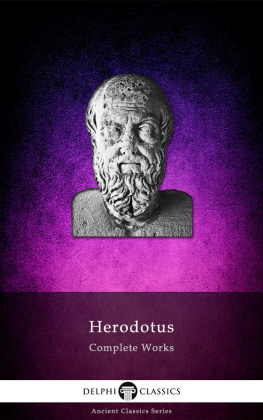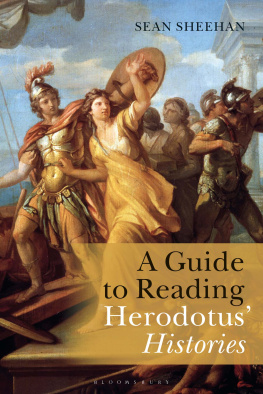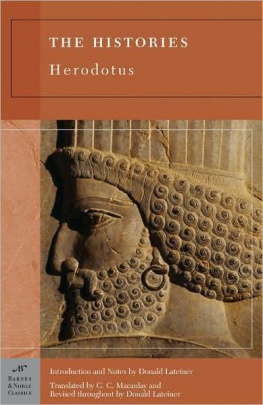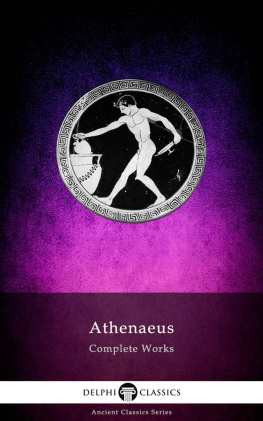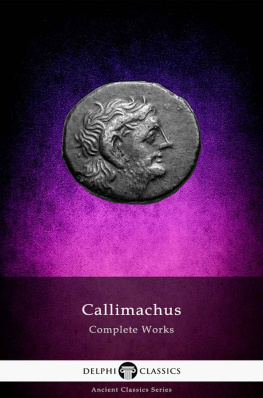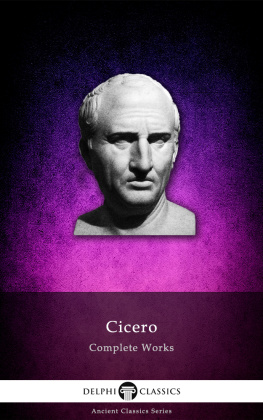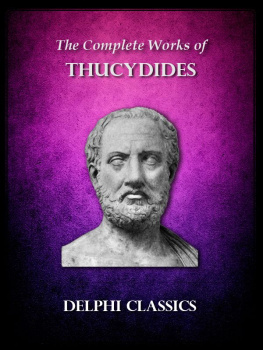The Complete Works of
HERODOTUS
(c.484425 BC)

Contents

Delphi Classics 2013
Version 1

The Complete Works of
HERODOTUS

By Delphi Classics, 2013
COPYRIGHT
Complete Works of Herodotus
First published in the United Kingdom in 2015 by Delphi Classics.
Delphi Classics, 2015.
All rights reserved. No part of this publication may be reproduced, stored in a retrieval system, or transmitted, in any form or by any means, without the prior permission in writing of the publisher, nor be otherwise circulated in any form other than that in which it is published.
Delphi Classics
is an imprint of
Delphi Publishing Ltd
Hastings, East Sussex
United Kingdom
Contact: sales@delphiclassics.com
www.delphiclassics.com
The Translations

The ruins of Halicarnassus, Herodotus birthplace, in modern day Bodrum, Turkey

The Mausoleum of Halicarnassus, one of the Seven Wonders of the Ancient World

Another depiction of the Mausoleum
THE HISTORIES

Translated by A. D. Godley
Composed in nine books, Herodotus monumental work The Histories is widely regarded as the founding work of history in Western literature. Written from the 450s to the 420s BC in the Ionic dialect, this precious text serves as a record of the ancient traditions, politics, geography and conflicts of various cultures in the Mediterranean and Asia Minor, from prehistoric to Classical times. The text implies that Herodotus travelled extensively around the ancient world, conducting interviews and collecting stories for his work. He provides much intriguing information about the nature of the world and the status of science during his lifetime, often engaging in private and engaging speculation. Although it is an impartial record, the text remains one of the most important historical sources regarding these affairs. It is responsible for establishing the genre and study of history in the Western world, winning its author the eternal epithet of Father of History.
The work is also remarkable for being the first surviving account of the rise of the Persian Empire, detailing the events and causes of the Greco-Persian Wars between the Achaemenid Empire and the Greek city-states in the 5th century BC. Herodotus portrays the conflict as one between the forces of slavery, the Persians, on the one hand, and freedom, the Athenians and the confederacy of Greek city-states which united against the invaders, on the other. Broadly speaking, The Histories is structured as a dynastic record of four Persian kings:
- Cyrus, 557530 BC: Book I;
- Cambyses, 530522 BC: Book II and part of Book III;
- Darius, 521486 BC: the rest of Book III then Books IV, V and VI;
- Xerxes, 486479 BC: Books VII, VIII and IX.
The Histories were later divided by Alexandrian scholars into nine books, named after the nine Muses: the Muse of History, Clio, representing the first book, then Euterpe, Thaleia, Melpomene, Terpsichore, Erato, Polymnia, Ourania and Calliope for books II to IX. A precise synoptic outline of the whole text can be accessed .
Throughout The Histories , Herodotus traces the development of the Persian Empire, detailing their conquests, their habits and customs and culminating with their ultimate downfall in Greece. The text is famous for its many digressions, with the whole of the second book breaking off from the Persians to explain a full history of Egypt. The text presents a diverse record of human experiences and settings within the context of an overarching historical order. The narrative structure allows for this diversity through simple stylistic devices, such as the principle of ring composition, familiar since the works of Homer, in which the introduction and conclusion of a story or sub-plot is signalled by the repetition of a formulaic statement, aiding the readers comprehension of stories within stories. The author utilises a deceptively simple narrative style, in which he narrates countless stories and intriguing details. Famous tales include the compelling tale of how Gyges spied on his naked Queen and won the kingdom for himself, the heroics of the Battle of Marathon and the dying runners gasp of Victory!, the heroic stand of the 300 Spartans at Thermopylae, the naval brilliance of Athens at Salamis, the poignant character sketch of King Croesus and, of course, the decadent wonders of the Persian Empire. All of these and many more tales, although at times of very questionable authenticity, have charmed millions of readers for over two millennia.

Roman copy of a Greek bronze original bust of Herodotus

Map of the known world at the time of Herodotus writing

A surviving papyrus fragment of the text
CONTENTS

Candaules, King of Lydia, Shows his Wife by Stealth to Gyges by William Etty. This is one of the very first stories related by Herodotus in Book I.

King Croesus on the pyre, one of the key events of the Histories, at the conclusion of the first Book

Darius I (550486 BC) was the third king of the Persian Achaemenid Empire, whose reign over the Empire is narrated throughout Books IV to VI.

Leonidas at Thermopylae by Jacques-Louis David, 1814. The 300 Spartans famous stand at Thermopylae is one of The Histories most compelling accounts.
Next page
